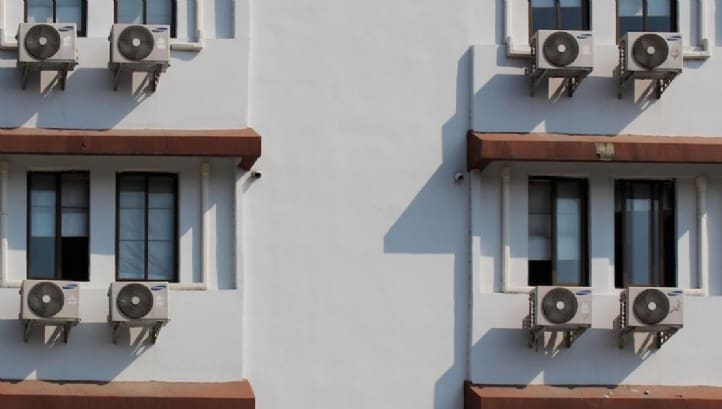A coalition of more than 20 businesses, NGOs, local authorities, policymakers and higher education establishments have forged a new joint initiative aimed at spurring the global transition to low-emission cooling.

According to the UN, greenhouse gas (GHG) emissions from cooling are currently on track to increase by 90% by 2050
Dubbed the “Cool Coalition” and launched at the First Global Conference on Synergies late last week, the initiative aims to inspire and support all organisations involved in cooling to make the transition away from technologies which produce high levels of fluorinated gases (F-gases). F-gases are found in everyday items such as inhalers, fridges, freezers and air conditioning units, with the most common being hydrofluorocarbons (HFCs).
Specifically, member organisations are tasked with leading by example and proving the business case for clean and efficient cooling; advocating for investment, research and infrastructure to support low-emission cooling and promoting collaboration towards the aims of the Kigali Amendment and Paris Agreement. Their membership also commits them to securing high-level, low-emission cooling commitments ahead of the UN Secretary General’s Summit this December.
The coalition is being overseen by UN Environment and has received support from the likes of energy giant ENGIE and Danish engineering firm Danfoss; Ministers from the Danish, Rwandan and Chilean Governments; The University of Birmingham and The Rocky Mountain Institute; and climate action organisations such as C40 Cities, REN21, Sustainable Energy For All and the Natural Resources Defence Council. In total, 25 individuals, groups and businesses have joined the initiative as founding “champions”.
“In a warming world, cooling is a necessity, not a luxury, and we need to provide it to the vulnerable populations who currently have no electricity,” Sustainable Energy For All’s chief executive Rachel Kyte said.
“This necessity is something that can be delivered within a 1.5 degree-pathway. Hundreds of millions of people at risk today from extreme heat need protection and we must protect them in a way that also protects the planet from increased carbon emissions.”
The work of the coalition will be monitored by UN Environment to ensure that it is driving progress towards the Sustainable Development Goals (SDGs) in the lead-up to 2030. The body claims that the collaborative project will contribute to SDGs 1, No Poverty; 7, Affordable and Clean Energy; 11, Sustainable Cities and Communities; 12, Sustainable Production and Consumption; 13, Climate Action; 14, Life Below Water and 15, Life on Land.
The road to 2050
According to the UN, greenhouse gas (GHG) emissions from the cooling sector are currently on track to increase by 90% by 2050 without further action, reaching 12 GtCO2e.
Within this timespan, the number of air conditioners in use across the world is predicted to rise from 1.2 billion to 4.5 billion as temperatures increase, populations gravitate towards cities and developing nations experience economic growth. While this uptake could be lifesaving for the 12,000 people killed by heatwaves each year, it could eat into a substantial chunk of the world’s remaining carbon budget.
In response to the issue, nations across the world have committed through the Kigali amendment to the UN Montreal Protocol to reduce HFCs by 85% between 2019 and 2036. It is believed that the Kigali amendment is likely to avoid close to 0.5C of global warming by the end of the century, if successfully implemented. Moreover, the International Energy Agency (IEA) claims that achieving the aims of the amendment could save the global economy $2.9trn by 2050, largely through saved energy and healthcare costs.
On a business level, the F-gas agenda seems to be experiencing slow uptake. A recent report last found that European retailers are behind schedule to implement natural refrigerants into operations, with the average supermarket refrigeration system thought to leak up to a quarter of its refrigerant charge annually – the equivalent of more than 1,500 metric tonnes of carbon emissions.
Nonetheless, there are notable examples of retailers committing to the phase out F-gases. Tesco, for example, could be set to reduce its carbon footprint by 40% – well above the 26.5% reduction it is targeting against a 2006 baseline – through the installation of low global warming potential (GWP) refrigerants across 1,200 UK stores.
Similarly, Aldi UK has invested £20m in natural refrigerants across all of its stores – a move which could see its potential annual refrigerant gas carbon emissions cut by 99% – while the likes of Asda, Waitroseand Sainsbury’s are using F1-inspired technology to steer cold air directly back down fridge units to stop it from spilling out onto the aisles.
To find out more about low-emission cooling for your business, you can download the edie Explains guide to low-carbon heating and cooling, produced in association with EDF Energy, by clicking here.
Sarah George
source: edie








